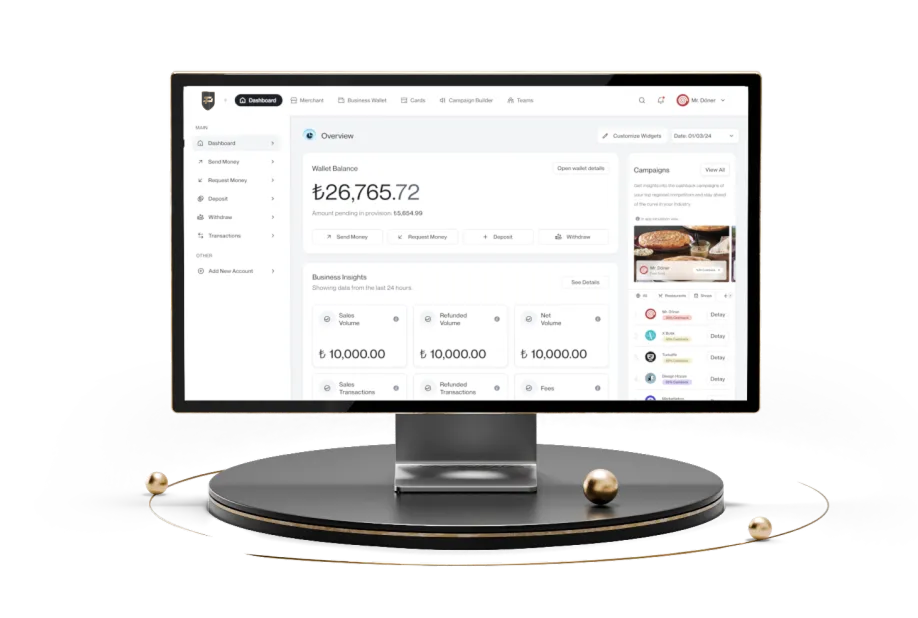What Is a Circular Economy? A Sustainability Guide
Every day, we consume, use, and often throw things away without realizing it. But what if there were a way to break this cycle and use resources more efficiently? Meet the circular economy — a model that turns waste into value, consumption into opportunity, and excess into gain! In this article, we explain what the circular economy is, how it differs from the linear model, and what its key components are.
What is the circular economy?
The circular economy is a sustainable economic model that replaces the traditional “take-produce-consume-dispose” approach. Its goal is to preserve the value of products and materials for as long as possible while minimizing waste and inefficiency. The circular economy is not limited to recycling; it also aims to ensure that products are designed from the outset to be durable, repairable, reusable, or recyclable. In this way, the excessive consumption of natural resources is prevented, ecosystems are supported in their renewal, and environmental impacts are reduced.
One of the main objectives of this model is to prevent waste and pollution through design in production and consumption processes. The lifespan of products is extended through maintenance, repair, reuse, and renewal methods, and economically valuable materials are recycled and reintroduced into production. Efficient use of resources is also at the heart of the circular economy. Following the principles of reduce, reuse, repair, and recycle, the consumption of water, energy, and raw materials is minimized.
In addition, to see how the concept of circular economy can be adapted to the business world, you can explore campaign management and financial solutions through the Papel Merchant Hub, or discover the convenience of digital payments as an individual user with Papel Wallet.

The difference between the circular and linear economy
The linear economy evaluates resources in a one-way process: extract → produce → use → dispose. In this model, products are generally designed to have short lifespans and are often discarded or incinerated after use, with limited recycling or reuse processes. This leads to resource depletion, large amounts of waste generation, and increased environmental pressure.
The circular economy, on the other hand, aims to break this flow and create closed loops. Materials and products are used, repaired, renewed, remanufactured, or recycled for as long as possible, re-entering the production cycle. Thus, instead of the logic of “extract resource → produce waste,” it promotes a mindset of “extract resource → create value loop → reuse.”
Another key difference lies in priorities and approach. The linear economy focuses on efficiency and cost reduction, often externalizing environmental impacts — meaning their costs are borne by society. The circular economy, however, seeks to balance environmental, social, and economic sustainability. It aims to prevent waste and pollution through design, build closed supply chains, and encourage innovative business models.

The key components of the circular economy
The key components of the circular economy define the principles and mechanisms that make the system work. These main components can be explained as follows:
Preventing waste and pollution by design
Preventing waste and pollution before they occur is the first step in the circular economy. Products and processes are designed to generate no waste. The use of toxic materials, excessive packaging, and unnecessary energy loss is minimized from the start.
Keeping products and materials in use
In the circular economy, products are kept in use for as long as possible. Their value is maintained through maintenance, repair, refurbishment, remanufacturing, and reuse. Even if a product can no longer be used, its components or materials are recycled and reintroduced into production.
Regenerating ecosystems and biological cycles
The circular economy considers not only technical materials but also biological resources. Through composting, returning nutrients to the soil, and separating organic waste, it supports the natural regeneration of ecosystems.
Use of renewable energy and materials
In a circular economy system, dependence on fossil fuels and non-renewable resources is reduced. Instead, renewable energy sources (such as solar, wind, and biomass) and biological, recyclable, or bio-based materials are preferred.
Modularity, reparability, and disassembly
Products are designed to be modular and suitable for maintenance, repair, and remanufacturing. Parts can be easily separated, replaced, or reintegrated.
New business models: sharing, leasing, and subscription-based approaches
In the circular economy, ownership is replaced by usage-based business models. For example, instead of being sold, a product can be leased, or customers can access it through subscription systems. This reduces overall production pressure while promoting wider product use.
Take-back and reverse logistics systems
Companies establish collection mechanisms to take back products at the end of their lifecycle. This allows products and components to be systematically recovered, reprocessed, or reintroduced into the market.
Supply chain collaboration and industrial symbiosis
In the circular economy, joint systems are developed between companies under the principle of “turning waste into input.” The waste of one company becomes raw material for another, creating a circularly connected producer-supplier ecosystem.
Digitalization and traceability
Digital tools are used to track material and product flows, measure performance, and analyze consumption data to optimize resources. This makes it possible to predict where materials are used, when maintenance is needed, or when they can be reused. One example of this is the e-Invoice system, about which you can learn more in our related article on Papel Blog.
This blog post contains general information, not legal, financial, or investment advice. The content is prepared for informational purposes only, and you are advised to seek professional advice for your specific circumstances. The expressions in this article do not carry any binding nature or responsibility and reflect only the author’s evaluation. All your decisions are your responsibility, and Papel Electronic Money and Payment Services Inc. accepts no liability for any consequences arising from them.

